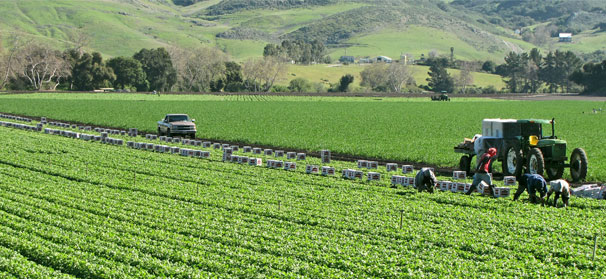
Jun 13, 2013Food safety a high priority for California farm
Farming and food safety keep Ryan Talley busy. Talley, a third-generation grower, is also chairman of the board of the California Leafy Green Products Handler Marketing Agreement (LGMA).
With his brother, Todd, and cousin, Brian, Ryan runs Talley Farms, a diversified operation in Arroyo Grande, Calif. His duties with LGMA often take him to Washington, D.C., as well.
It was Ryan’s grandfather, Oliver Talley, who started growing vegetables in the Arroyo Grande Valley in 1948. He grew broccoli, beans, cauliflower, peppers and tomatoes, among other crops. In 1966, Oliver and his two sons bought the first piece of farmland owned by the Talley family, according to the Talley Farms website.
Throughout the late ’60s and early ’70s, the family bought more land, built their first cooler and became a vegetable shipper, according to the website. Ryan’s uncle, Don Talley, ran the family farm for decades; Don’s wife, Rosemary, still works part-time. Four of Ryan’s five children, representing the fourth generation, are also working on the farm, he said.
These days, Talley Farms grows, packs and ships a variety of vegetables, and also grows wine grapes, lemons and avocados. Other segments of the family business include Talley Vineyards and Talley Farms Fresh Harvest, a weekly CSA service available to local residents, according to the website.
Vegetable crops grown today include bell peppers, cilantro, spinach, nappa cabbage, Brussels sprouts and red leaf, green leaf and romaine lettuce. The farm’s crops encompass about 1,200 acres total, Ryan said.
The crops are sold mostly fresh-market, and shipped to grocery stores and other outlets all over the country. The farm employs about 125 people – double that number during busy times, Ryan said.
Arroyo Grande is in California’s central coast region, near the Pacific Ocean. The growing conditions are excellent, with temperate weather that allows the farm to grow crops pretty much year round. Thanks to nearby wells, the farm has an adequate water supply, he said.
A lot of California’s leafy greens growers transfer their production to Arizona in winter, to give themselves the ability to grow year round. Thanks to its location, Talley Farms doesn’t have to do that, Ryan said.
The farm’s leafy green crops are grown under LGMA safety standards. Leafy greens growers in California and Arizona (who produce 90 percent of the leafy greens grown in the United States) organized marketing agreements in 2007, in response to the E. coli outbreak in spinach the previous year. The growers had their own food safety practices previous to the outbreak, but the incident forced them to band together and standardize their leafy greens safety regimens, he said.
The recently released Food Safety Modernization Act proposals are similar to LGMA’s already established food safety rules, so when the new rules go into effect it won’t be much of a burden for the LGMA members, Ryan said.
Talley Farms’ higher safety standards for leafy greens have spilled over into its other crops, too. It’s a much simpler approach than having different standards for different crops. Other leafy greens growers do the same thing, he said.
People need to eat more fruits and vegetables, and farms need to provide them in a safe manner, Ryan said.
“We’re in a very noble profession,” he said. “We’re growing the best medicine.”
















